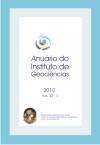Evaluation of Eta model forecasts at Serra do Mar region (São Paulo State), Brazil
DOI:
https://doi.org/10.11137/2010_2_36-51Abstract
Comparisons of Eta 5 km mesoscale model forecasts against observations in Cunha, Curucutu, Itanhaém, Paraibuna, Picinguaba, Santa Virgínia e São José dos Campos, located in Serra do Mar (SP) region, is carried out for 2008. The 2 m temperature, station level pressure, winds at 10 m and precipitation are evaluated for the 24 h, 48 h and 72 h forecasts. The results show that the atmospheric pressure was systematically underestimated (overestimated) in Paraibuna and Picinguaba (Cunha and Curucutu), due to differences between the model's altitude and the real station altitude, although its diurnal cycle is well predicted, with two maximum (0 and 12 Z) and two minimum (6 and 18 Z), as observed. For atmospheric pressure, model's performance is better at the 48 h forecast. The temperature's diurnal cycle is very well predicted. The temporal correlation between forecasts and observations are very high, varying from 73 to 91%. In some locations it was observed that temperature was overestimated (near 3ºC in Curucutu and Santa Virgínia and 2ºC in Itanhaém), and that it was a systematic error. The temperature forecasted 24 h in advance is superior than the other forecasts. In general the model shows a tendency of underestimate (overestimate) the frequence of occurrence of calm (strong) winds. The wind direction is the most difficult variable to forecast due probably to the differences between model's topography and the real topography. Although the model shows the characteristic turning of the wind during the day caused by the daily warming. The total monthly precipitation is well predicted, although in Itanhaém, Paraibuna and mainly in Picinguaba the values are overestimated. The frequence of occurrence of rainy events (total daily precipitation < 0,3 mm) is overestimated by the model, although it is the best predicted category, with higher ETS, BIAS and Hit. The analyses shows that one of the model's source of error is related to its topography.Downloads
Download data is not yet available.
Downloads
Published
2010-12-01
How to Cite
Dereczynski, C. P. (2010) “Evaluation of Eta model forecasts at Serra do Mar region (São Paulo State), Brazil”, Anuário do Instituto de Geociências. Rio de Janeiro, BR, 33(2), pp. 36–51. doi: 10.11137/2010_2_36-51.
Issue
Section
não definida
License
This journal is licensed under a Creative Commons — Attribution 4.0 International — CC BY 4.0, which permits use, distribution and reproduction in any medium, provided the original work is properly cited.















